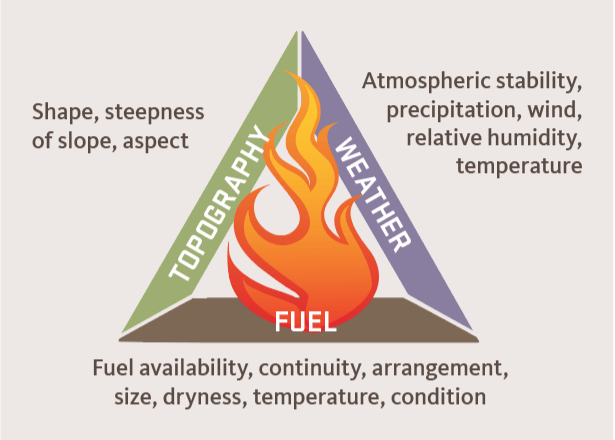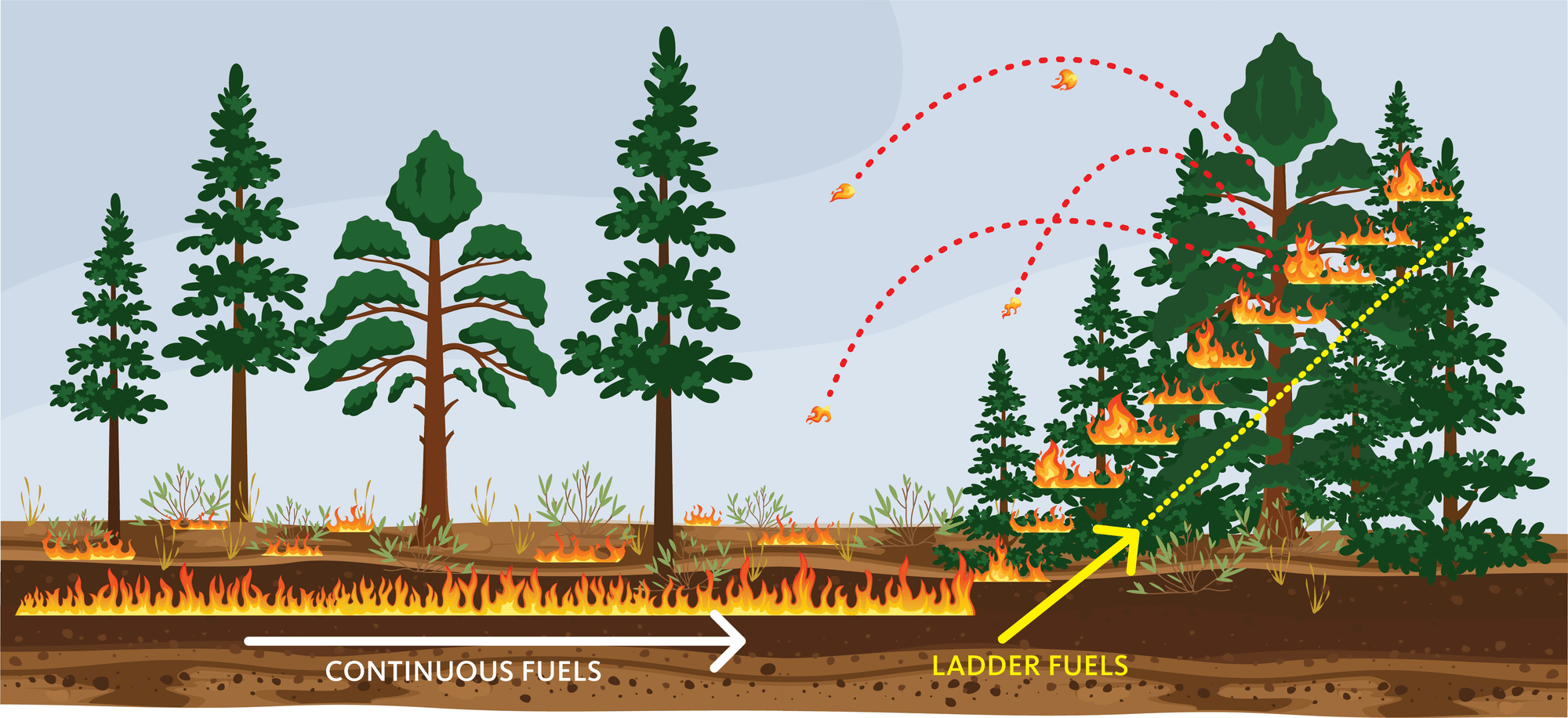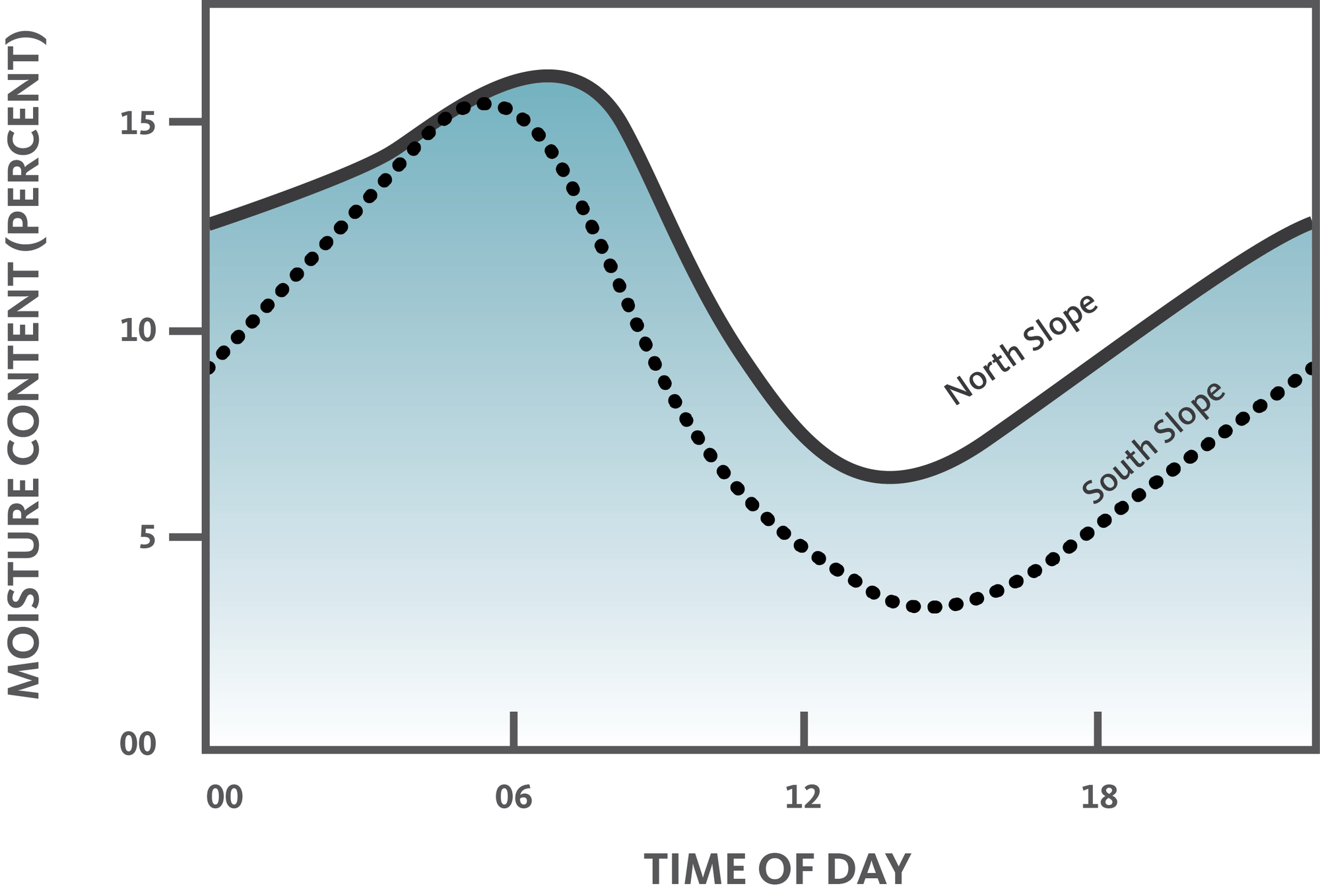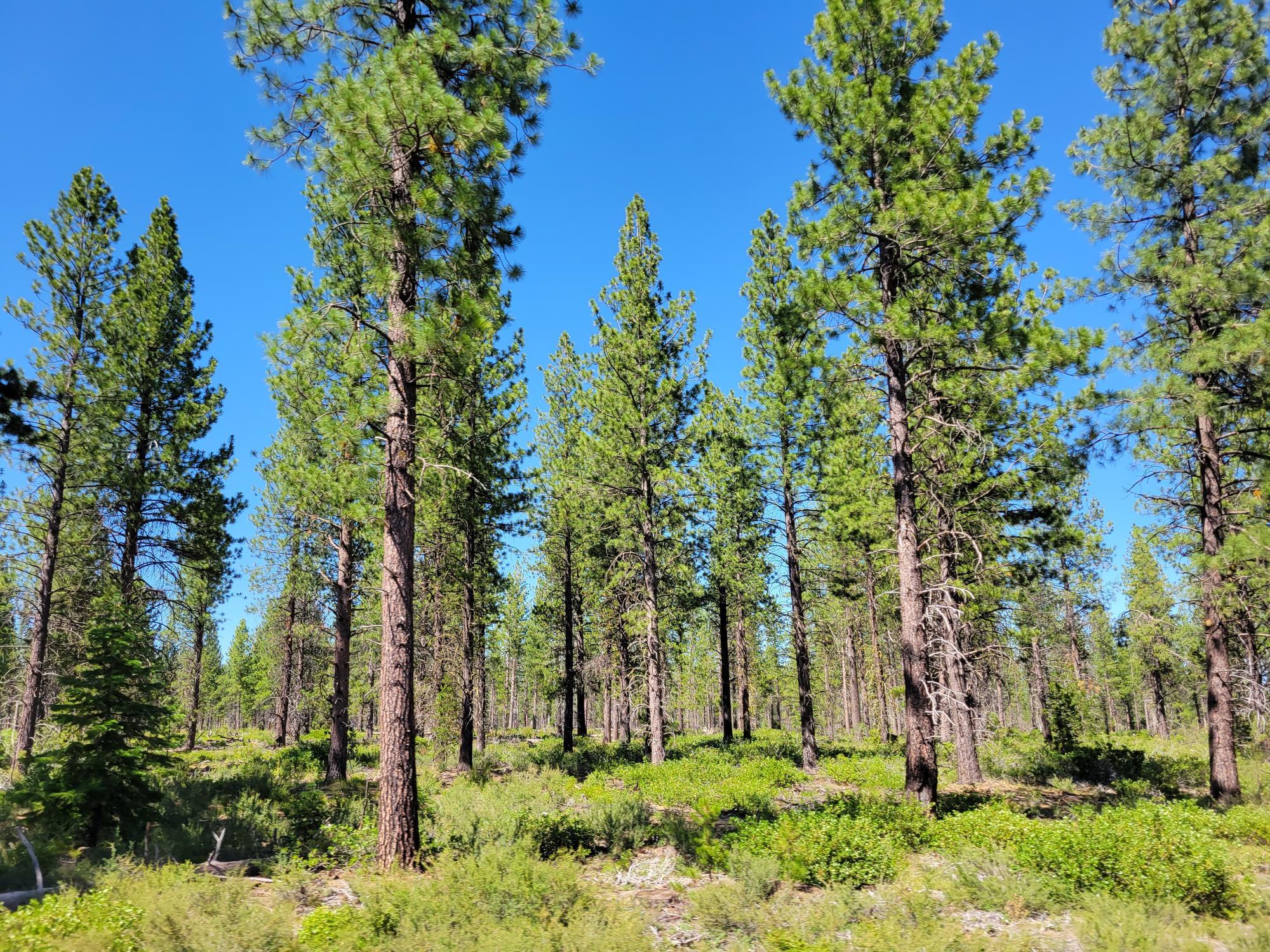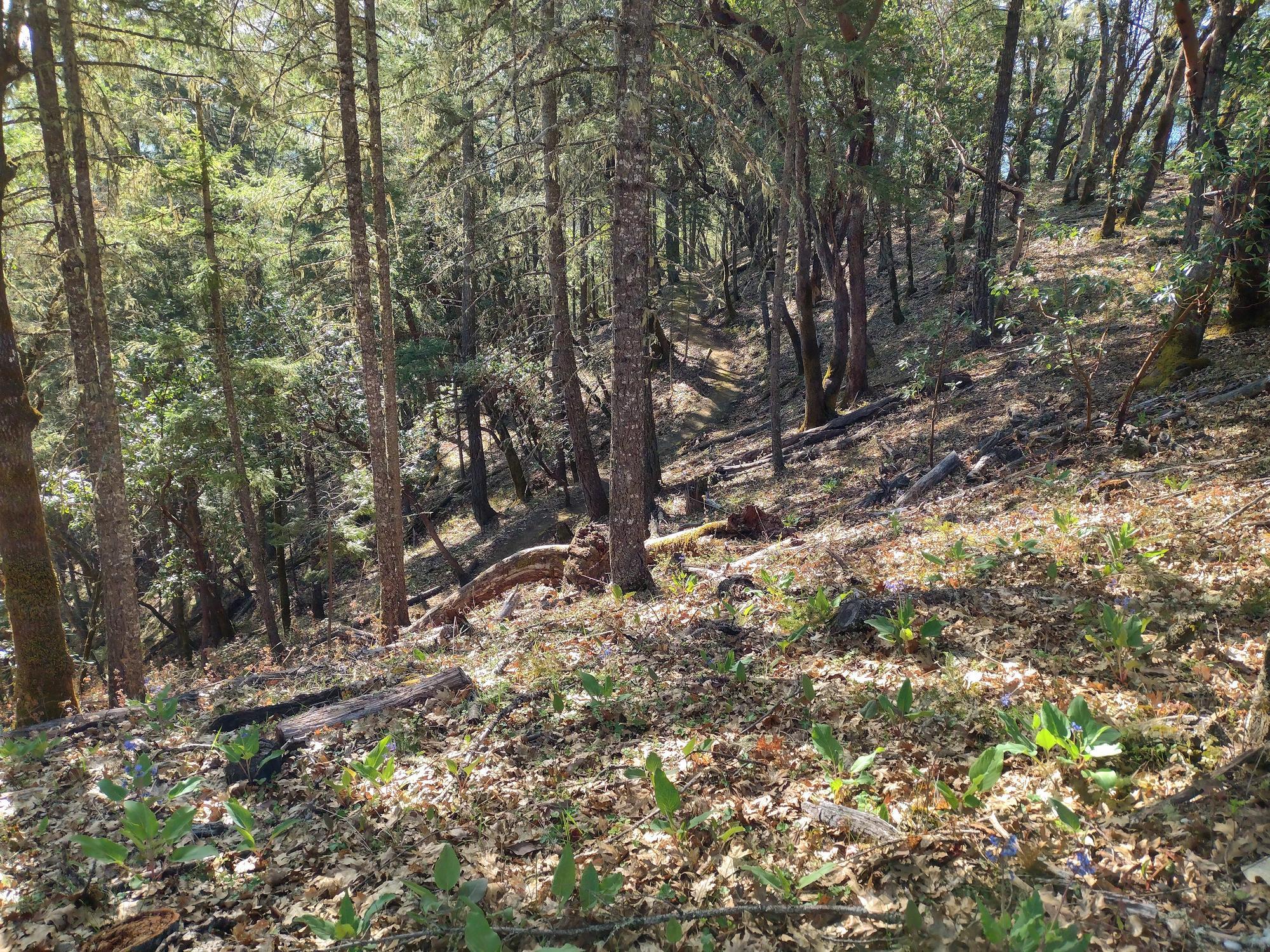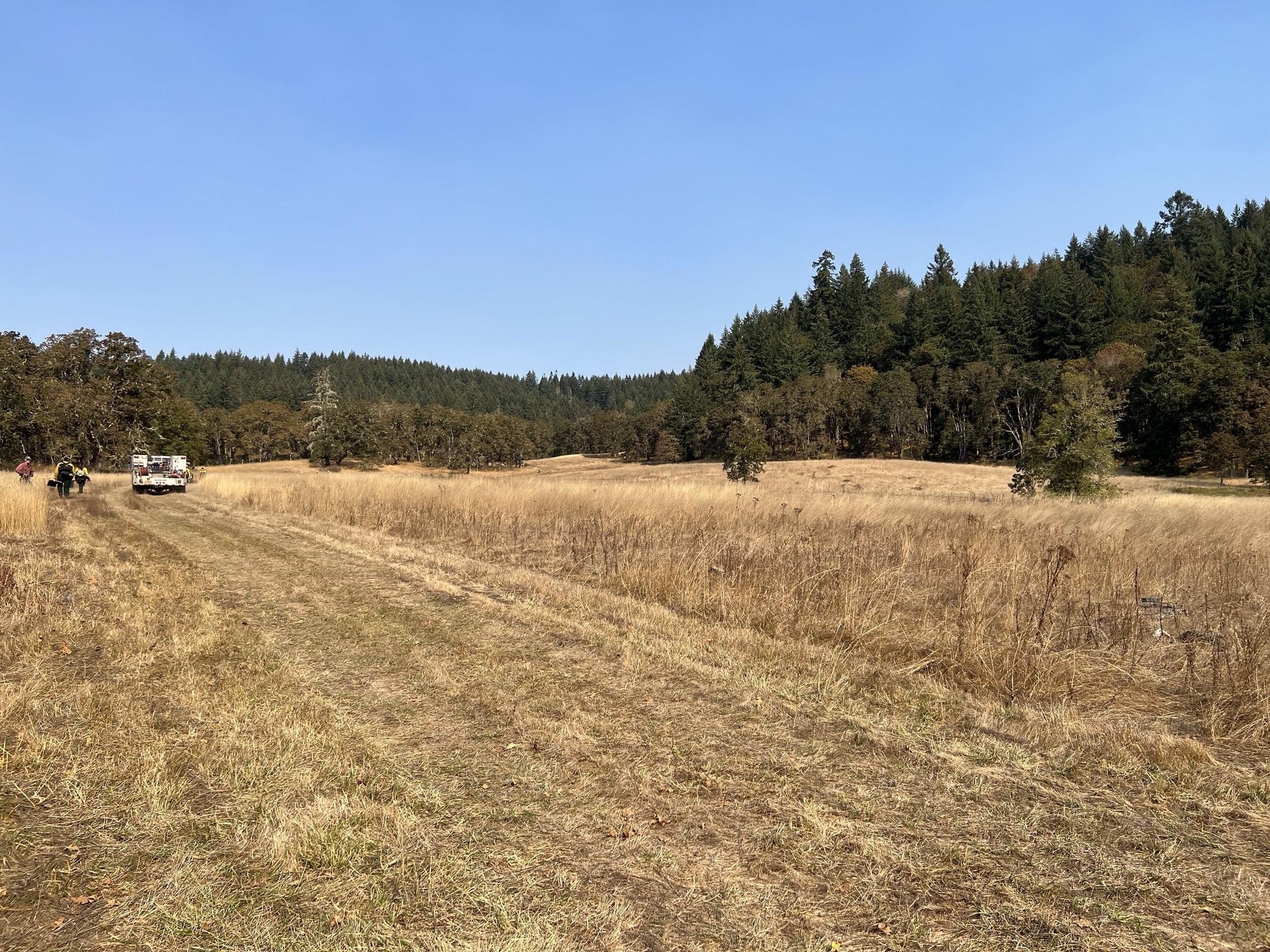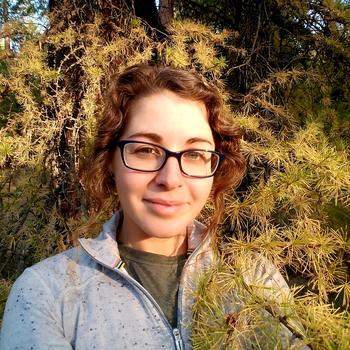Prescribed fire operations largely focus on addressing the overabundance of fuels on the ground. Fuels vary across the landscape. They can include grass, leaf litter, sticks, living or dead shrubs and small or large trees. Along with weather and topography, fuel is one of the key factors that affect how a fire behaves during a prescribed burn. Fuel characteristics such as size, shape, compactness, chemical composition, arrangement, moisture content and amount (also known as fuel-loading) influence fire intensity, rate of spread and burn severity.
Fuel characteristics
Size
If you’ve ever built a campfire, you know to use kindling to start a fire before adding larger wood. Fine fuels such as grasses act like kindling. They ignite easily, they carry and spread fire faster than larger fuels, and they are quickly consumed. Large pieces of fuel such as downed logs don’t contribute much to fire spread, yet can burn for long periods of time once ignited. In prescribed burning, the difference between these fine fuels and larger fuels is important.
Fuel size classes refer to down dead materials. These are based on the rate at which they lose or gain moisture due to environmental changes in relative humidity. Fine fuels such as grasses, leaves, pine needles and thin twigs are called one-hour fuels because they adjust quickly to moisture in their surrounding environment. Small branches are called 10-hour fuels. Larger branches are 100-hour fuels; they lose moisture less rapidly, as it takes longer for them to respond to changes in environmental factors. Logs are called 1,000-hour fuels, because they take much longer to dry out or absorb moisture and are harder to ignite.
| Fuel category | Diameter (inches) | Description | Impact on fire behavior |
|---|---|---|---|
| 1-hour | Less than 0.25 | Needles, twigs, moss, lichens, small shrubs and grasses | Easily ignited. Supports initial fire spread and the heating and combustion of larger fuels. Under dry conditions, these fuels are flashy and surface fires spread quickly. |
| 10-hour | 0.25–1 | Small branches, shrubs | Supports fire spread and the heating and combustion of larger fuels. Under very dry conditions fires spread quickly. |
| 100-hour | 1–3 | Medium-sized branches | Supports fire spread and the heating and combustion of larger fuels. |
| 1,000-hour | 3–8 | Large branches, small logs | Supports fire spread. Increases fire duration and influences fire severity, depending on loading. |
| 10,000-hour | Greater than 8 | Large, downed logs that are solid or moderately decayed | Ignites after flaming front has passed. Large fuel pieces do not support fire spread but can increase fire duration and severity near the log. If fuel loading is high and distributed across the site (such as from beetle-killed trees), high fire severity can be more widespread and can increase both resistance to control and the duration of burning. |
| Snags | Variable | Trunk only or trunk with large branches, depending on snag conditions | When snags combust, they can torch, lofting embers and firebrands ahead of the main fire, starting additional spot fires. Snags may increase resistance to control. |
Shape and compactness
Along with size, fuel shape contributes to the surface-area-to-volume ratio. Fine fuels have higher surface area ratios than large fuels. The higher the ratio, the more rapidly moisture can escape from or be absorbed by fuel. Pine needles and leaves, for example, have higher surface area ratios than large branches and stems. They ignite more easily and burn more quickly.
The shapes of leaves, needles and wood vary. Shape can also influence the way these fuels accumulate and settle on the ground. Litter made up of flat leaves or needles is more likely to become compacted than litter made of wavy or rounded leaves. As fuels become more compact — especially on the soil surface — air space between fuels decreases and air movement is restricted. As a result, there is less available oxygen, and fuels become hard to ignite. Also, compacted fuel on or immediately above the forest floor may be moister than fuels that are above the floor but not in contact with the surface.
In contrast, loosely arranged fuels dry out quickly and are easily exposed to both heat and oxygen during a fire. They ignite more easily. Standing dead grass, for example, will burn faster than grass that has been mowed or compacted by equipment
Chemical composition
Some plant species contain volatile chemicals that contribute to fire behavior. These chemicals can increase the rate of combustion, fire intensity, ember production and even resistance to flames being put out. The chemicals may occur in both live and dead fuels. Plants that contain these chemicals require special attention during burn operations. These plants include:
- Pine and other conifer trees. Conifers contain resin and volatile oils in their foliage and sap. Resin is flammable and contributes to some species burning more intensely and producing more embers.
- Snowbrush ceanothus, bitterbrush and manzanita. These shrubs have hard, leathery leaves that contain wax and volatile oils. They typically burn more intensely than plants with soft, pliable leaves or those that have more watery sap.
Arrangement
The horizontal and vertical distribution of fuels influences the intensity, direction and speed of fire spread. Ground fuels refer to organic matter such as duff (decomposing litter) and roots. Surface fuels include leaves, needles, grasses, forbs, shrubs, twigs, tree stumps, moss, lichen and branches on the ground. Crown or aerial fuels are foliage and branches found in the forest canopy.
Fuels can be uniform or patchy in their horizontal or vertical arrangement. If fuels are continuous and closely arranged next to one another, fire can easily spread horizontally. A prescribed burn planner might prefer continuous fuel beds of shrubs or grass if uniform burning is part of their objectives.
In contrast, gaps in a fuel bed of grass, shrubs or litter can reduce fire intensity and slow spread. If the gaps do not contain enough fuels to carry a fire, there may be patches of fuels that do not burn.
Fire can spread from the ground to the tree canopy when fuels are arranged one above the other. This vertical fuel arrangement is often referred to as "ladder fuel.” Fuel ladders can lead to single or small groups of trees burning (known as “torching”). They can also allow fire to burn across tree canopies (known as “crown fires”). Depending on objectives, burn planners might prepare a unit by first removing lower tree branches or other fuels below trees to reduce the likelihood of fire moving up into the canopy.
Fuel loading
Fuel loading refers to the weight of total or available fuels on a site, usually described in terms of tons per acre. The amount of fuel, or “fuel load,” can determine the amount of energy released, flame lengths, temperature and duration of burning. Managers can estimate fuel loads before a prescribed burn by visually comparing the site to a series of standardized photos or averaging results from measurements along a transect tape. Estimates of loads for fuels of different sizes are essential for predicting fire behavior and determining potential smoke emissions. The Oregon Department of Forestry requires burn planners to estimate fuel loads before a burn to predict emissions and keep smoke from spreading to populated areas.
Moisture content
Fuel moisture, more than any other factor, determines the amount of fuel available to burn. It is also one of the most important factors in the rate of fire spread, intensity, smoke production and plant mortality.
Moisture content is defined as the percentage of moisture in a fuel. The amount of moisture can be influenced by the type of vegetation, whether it is alive or dead, fuel size, shape, sun exposure, overstory density and atmospheric conditions. When fuels are dry, expect longer flame lengths, faster rates of spread and greater heat.
As noted earlier, fine fuels dry out (or get wet) faster than larger fuels. A short period of sunshine after heavy rains can dry out grass and pine needles, while logs and large sticks remain moist inside. Prescribed burn planners can use this to their advantage if they want to limit the intensity of a burn. They can do this by burning when fine fuels are dry but larger fuels are more moist and less likely to ignite.
Dead fuels such as leaf litter and sticks generally have much lower moisture content than most live vegetation. Although dead fuels are usually the main contributor to fire behavior, live fuels can also impact fire activity due to their higher moisture content. They can slow combustion, reduce fire spread or dampen a fire, depending on their moisture content. Moisture content in living plants is usually highest during the early spring growth periods when soil moisture and precipitation are still abundant. By the end of summer and as plants go into fall dormancy, moisture contents drop to their lowest levels. Heavier or larger dead fuels such as small logs dry out over the course of a summer and regain moisture gradually with fall and winter precipitation.
In general, fuels lose moisture as temperature and the time since the last rain increases and relative humidity decreases. Dry winds can dry out fuels rapidly (Prescribed Fire Basics: Fire Weather, EM 9385). Fine fuel moisture content fluctuates throughout the day with changes in air temperature and relative humidity. It reaches its lowest point in early to midafternoon. Prescribed burns may be ignited at this time to take advantage of warmer, drier conditions, or earlier or later in the day if more moderate conditions are desired. At other times of the day, fuel moisture content can reach levels at which fuels will no longer burn. Seasonal shifts in moisture and temperature can also determine the brief windows of time when a prescribed burn can be safely conducted.
Fuels in their environment
For millennia, people have manipulated fuels to meet their objectives. The characteristics and conditions of fuel are important considerations before, during and after prescribed fire. These can vary greatly by ecosystem and location. Burn planners consider these aspects of fuel to predict, alter and observe fire behavior and its impacts.

